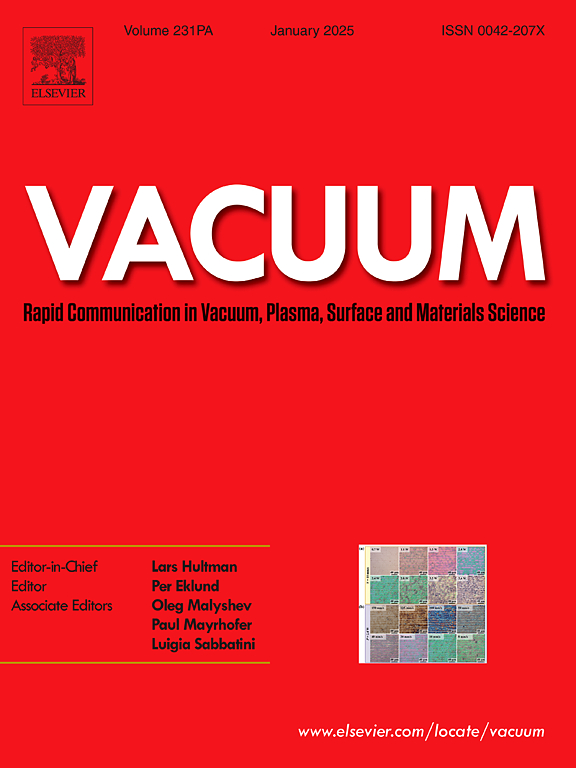Thermal stability of Li films on a polycrystalline W substrate
IF 3.8
2区 材料科学
Q2 MATERIALS SCIENCE, MULTIDISCIPLINARY
引用次数: 0
Abstract
The thermal stability of thin Li films (≤7 nm) on a polycrystalline W substrate is reported in the temperature range of 300–1800 K to advance understanding of Li plasma-facing components (PFCs) in fusion devices. High steady-state and transient heat loads on the PFCs of fusion devices can yield surface temperatures exceeding 2200 K, so the thermal stability of Li in proposed Li-W hybrid PFCs requires testing for potential “dry-out” conditions at such high temperatures. Li films were deposited on a polycrystalline W foil in ultrahigh vacuum conditions, and their thermal stability was probed with a combination of temperature programmed desorption (TPD), low-energy ion scattering (LEIS), and X-ray photoelectron spectroscopy (XPS). With TPD, Li desorption became measurable starting at 460 K, and Li did not fully desorb from the W substrate until 1125–1200 K. LEIS and XPS results agreed with the findings from TPD. At 455 K, increased surface diffusion of Li was indicated by the XPS results before the onset of Li multilayer desorption. This investigation of the thermal stability of high-purity Li thin films on a clean, W-based substrate will inform design, operation, and performance of future hybrid PFC systems with liquid Li on a solid W substrate.
求助全文
约1分钟内获得全文
求助全文
来源期刊

Vacuum
工程技术-材料科学:综合
CiteScore
6.80
自引率
17.50%
发文量
0
审稿时长
34 days
期刊介绍:
Vacuum is an international rapid publications journal with a focus on short communication. All papers are peer-reviewed, with the review process for short communication geared towards very fast turnaround times. The journal also published full research papers, thematic issues and selected papers from leading conferences.
A report in Vacuum should represent a major advance in an area that involves a controlled environment at pressures of one atmosphere or below.
The scope of the journal includes:
1. Vacuum; original developments in vacuum pumping and instrumentation, vacuum measurement, vacuum gas dynamics, gas-surface interactions, surface treatment for UHV applications and low outgassing, vacuum melting, sintering, and vacuum metrology. Technology and solutions for large-scale facilities (e.g., particle accelerators and fusion devices). New instrumentation ( e.g., detectors and electron microscopes).
2. Plasma science; advances in PVD, CVD, plasma-assisted CVD, ion sources, deposition processes and analysis.
3. Surface science; surface engineering, surface chemistry, surface analysis, crystal growth, ion-surface interactions and etching, nanometer-scale processing, surface modification.
4. Materials science; novel functional or structural materials. Metals, ceramics, and polymers. Experiments, simulations, and modelling for understanding structure-property relationships. Thin films and coatings. Nanostructures and ion implantation.
 求助内容:
求助内容: 应助结果提醒方式:
应助结果提醒方式:


